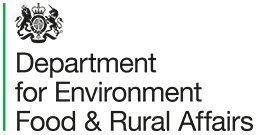Changes to Bovine Identification, Registration, and Movement in England
Overview
An effective cattle[1] traceability system is essential to control the spread of infectious diseases. Failure to do so can have a devastating impact on the economy, international trade, and public health. The Foot and Mouth outbreak of 2001 resulted in over 6 million cattle and sheep being culled and was estimated to have cost the UK economy £8 billion[2].
When we can identify and trace cattle to a location, we have a better chance of tackling disease outbreak. The accuracy of traceability data and the speed with which it becomes available is critical to reduce the impact of disease.
The current Cattle Tracing System (CTS) was introduced in 1998 – towards the end of the BSE epidemic of the 1980s and 1990s. This was a time when only 9% of households had an internet connection. The processes CTS relied on were based on information and documents being sent by post and processed manually. Whilst CTS remains effective, it is unable to accommodate further development.
We need a new, modern system that can meet the needs of today and gives confidence to consumers, and the international community with whom we trade. The government’s ambition is to achieve a world-leading Livestock Information Service (LIS) while simplifying legislation and supporting new technology. This will allow disease to be identified and controlled more effectively.
Working with industry, we aim to put new processes in place to improve the quality of cattle traceability data and speed at which it is captured. We are aiming to reduce the administrative burden for keepers, livestock markets, and abattoirs where possible. When bovine electronic identification is introduced, keepers will be able to scan a beast’s ear tag to access its digital record, make changes, and report births, movements, and deaths. Our aim is for the digital record to be the single source of truth for all data relating to each beast, so that keepers no longer have to maintain a separate on-farm holding register or manually update passports. Markets and abattoirs will be able to process electronically identified animals far more quickly without need to cross-reference, or manually update passports. We will be working closely with stakeholders across all parts of the industry to plan the transition to a fully digital service at a pace that suits industry needs.
We aim to adopt a fair and proportionate approach to ensuring cattle are appropriately registered and identified, and their movements recorded accurately and on time. We will support keepers to supply the correct information to government and intend to give keepers opportunity to correct errors where appropriate before any formal action is taken.
We are consulting on proposals designed to achieve these aims. The responses to this 8-week consultation will inform policy and service design as well as future legislation. The proposals relate to England only, but are aligned with Wales, Scotland, and Northern Ireland wherever possible.
[1] For the purposes of this consultation, “cattle” or “beast” includes bovine species Bison Bison (bison) and Bubalus Bubalis (buffalo). For ease, they will be collectively referred to as “cattle” throughout this document.
[2] National Audit Office (2002) The 2001 Outbreak of Foot and Mouth Disease.
Why your views matter
We have engaged extensively with partners and industry leaders via the Traceability Design User Group (TDUG). The Traceability Design User Group is a joint industry-government group within the Livestock Information Transformation Programme. We now seek the views of the wider cattle industry and public. This will ensure we capture areas of interest and concern from those who will be affected and will enable these views to influence on-going policy development, service design, legislation, and practical application.
What happens next
This consultation is now closed.
We received 1146 responses to the consultation, which are being analysed and reviewed. A huge thank you to everyone who took the time to hear our proposals and share their views. We expect to publish the government response in the coming weeks.
Audiences
- Abattoir Operator
- Farmers
- Land Agents
- Livestock show ground operators
- Local Authorities
- Manufacturers of livestock identifiers
- Operators of animal gatherings
- Stakeholders
- Tenant Farmers
- Vets
Interests
- Animal diseases
- Animal welfare
- Animals
- Cattle
- Dairy industry
- DEFRA Policy
- Farm management
- Food standards
- Livestock disease control
- Livestock identification and movement
- Meat Industry
- Policy and Delivery
- Rural economy and communities

Share
Share on Twitter Share on Facebook